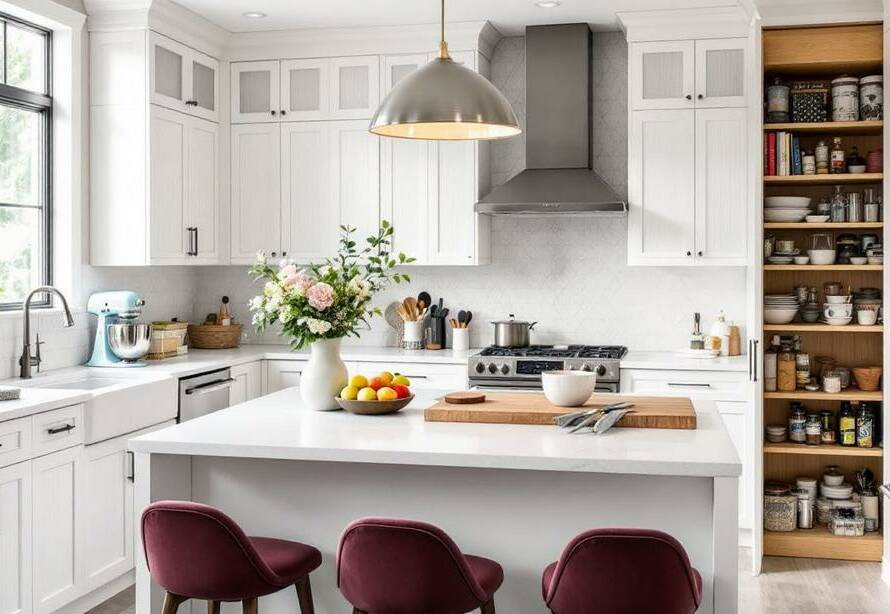Remodeling your home is an exciting opportunity to breathe new life into your space, but it’s also a major financial commitment. Without a solid budget, costs can spiral out of control, leaving you stressed instead of satisfied. Budgeting for your remodel strategically—knowing where to invest and where to cut back—ensures you get the best results without breaking the bank.
In this blog, we’ll walk you through smart ways to allocate your remodeling dollars, maximizing impact and minimizing unnecessary spending.
TLDR – Quick Guide
Budgeting for your remodel? Here’s the breakdown:
Splurge On:
- Quality Flooring: Durable materials increase resale value and longevity.
- Kitchen and Bathroom Fixtures: High-quality items in these areas make daily life easier and enhance home appeal.
- Energy-Efficient Upgrades: Save on utility bills while adding long-term value.
Save On:
- Trendy Design Elements: Opt for budget-friendly decor that can be updated easily.
- DIY Work: Tackle painting or minor tasks yourself to cut labor costs.
- Cabinetry Refinishing: Refacing cabinets instead of replacing them can save thousands.
By focusing your budget on high-impact areas, you’ll create a home that’s functional, stylish, and financially smart.
Detailed Breakdown
1. Where to Splurge
Quality Flooring
Investing in durable flooring materials like hardwood, tile, or luxury vinyl pays off. These options withstand wear and tear, look stunning, and can boost resale value. Low-quality flooring may require frequent replacements, costing you more in the long run.
Kitchen and Bathroom Fixtures
The kitchen and bathroom are high-traffic areas that deserve premium fixtures. Think faucets, sinks, and hardware that blend functionality with style. Spending a little extra here ensures these daily-use items last longer and enhance your home’s appeal.
Energy-Efficient Upgrades
From energy-efficient windows to smart thermostats, these upgrades save you money on utility bills and increase your home’s marketability. While they may come with a higher upfront cost, the long-term savings are worth every penny.
2. Where to Save
Trendy Design Elements
Trendy wallpaper, bold paint colors, or chic light fixtures might be tempting splurges, but trends fade fast. Choose budget-friendly alternatives for decor items that are easy to swap out as your tastes change.
DIY Painting and Basic Tasks
Painting walls, assembling furniture, or installing light fixtures are tasks that most homeowners can handle with a little research and effort. Save on labor costs by taking these projects into your own hands.
Cabinetry Refinishing
Instead of tearing out and replacing cabinets, consider refinishing or refacing them. A fresh coat of paint, new doors, or updated hardware can transform old cabinetry at a fraction of the cost.
Key Takeaways
- Splurge on high-impact areas like flooring, fixtures, and energy-efficient upgrades.
- Save on easily replaceable trends, DIY projects, and cabinet refinishing.
- A strategic budget ensures you maximize value without compromising quality.
By planning ahead and knowing where to allocate funds, you’ll achieve a stylish, functional remodel while keeping your finances in check.
FAQs
1. How much should I budget for a remodel?
The typical recommendation is to spend no more than 10-15% of your home’s value on a major remodel. Create a detailed plan to prioritize spending on high-impact areas.
2. Is DIY remodeling really worth it?
DIY can save money, but it depends on your skills and the project. For tasks like painting or light installations, it’s a great option. For plumbing or electrical work, hire a professional to avoid costly mistakes.
3. What’s the biggest mistake people make when remodeling?
Underestimating costs and not leaving room for unexpected expenses are common mistakes. Always include a contingency fund of 10-20% of your total budget.
4. Are energy-efficient upgrades worth the splurge?
Yes! Energy-efficient upgrades lower your utility bills and add long-term value to your home. Many also qualify for tax credits or rebates, further increasing their cost-effectiveness.
5. Can I get quality materials on a budget?
Absolutely. Look for sales, shop clearance items, or consider gently used materials from salvage stores. These options can help you save without sacrificing quality.


